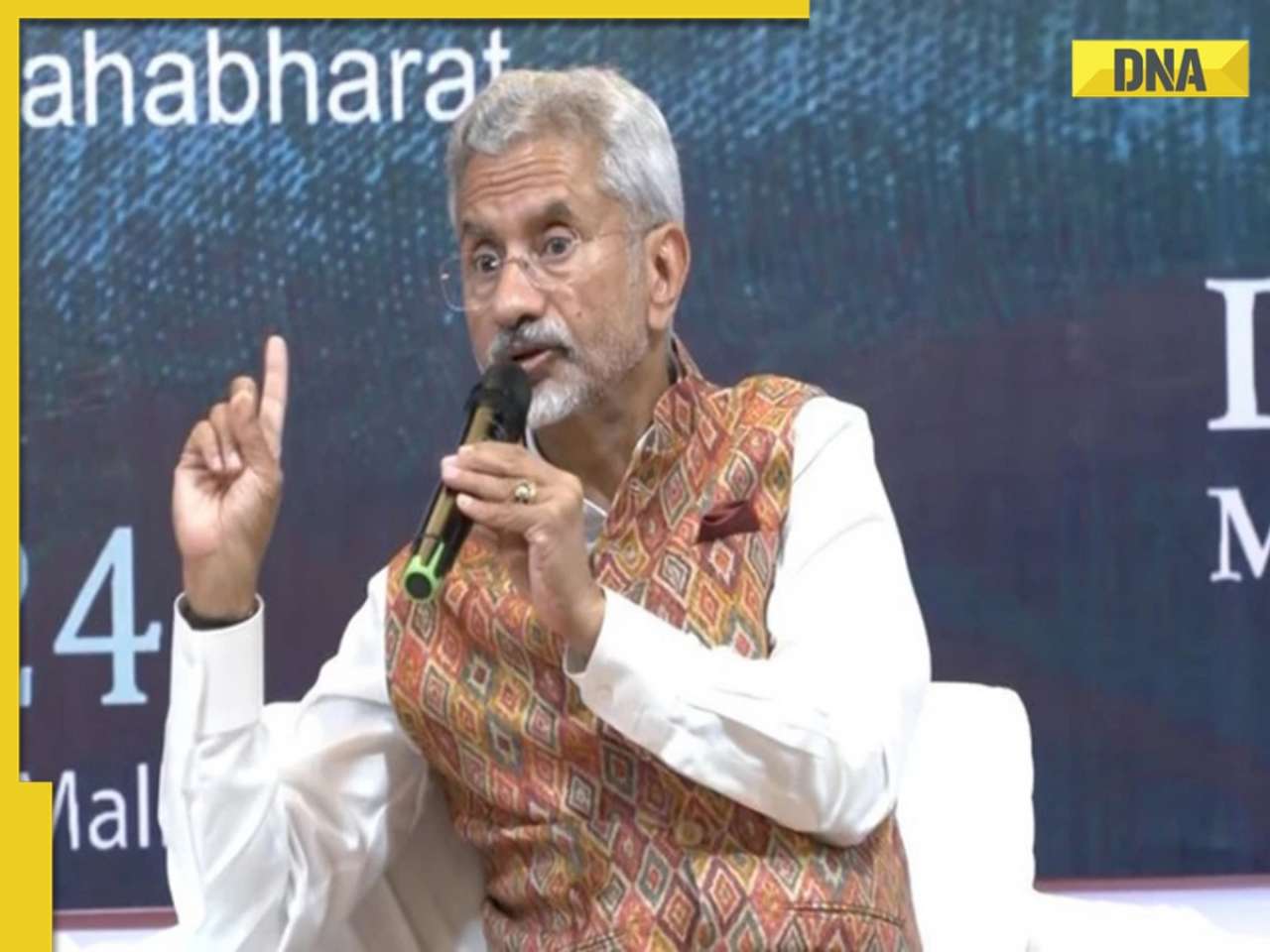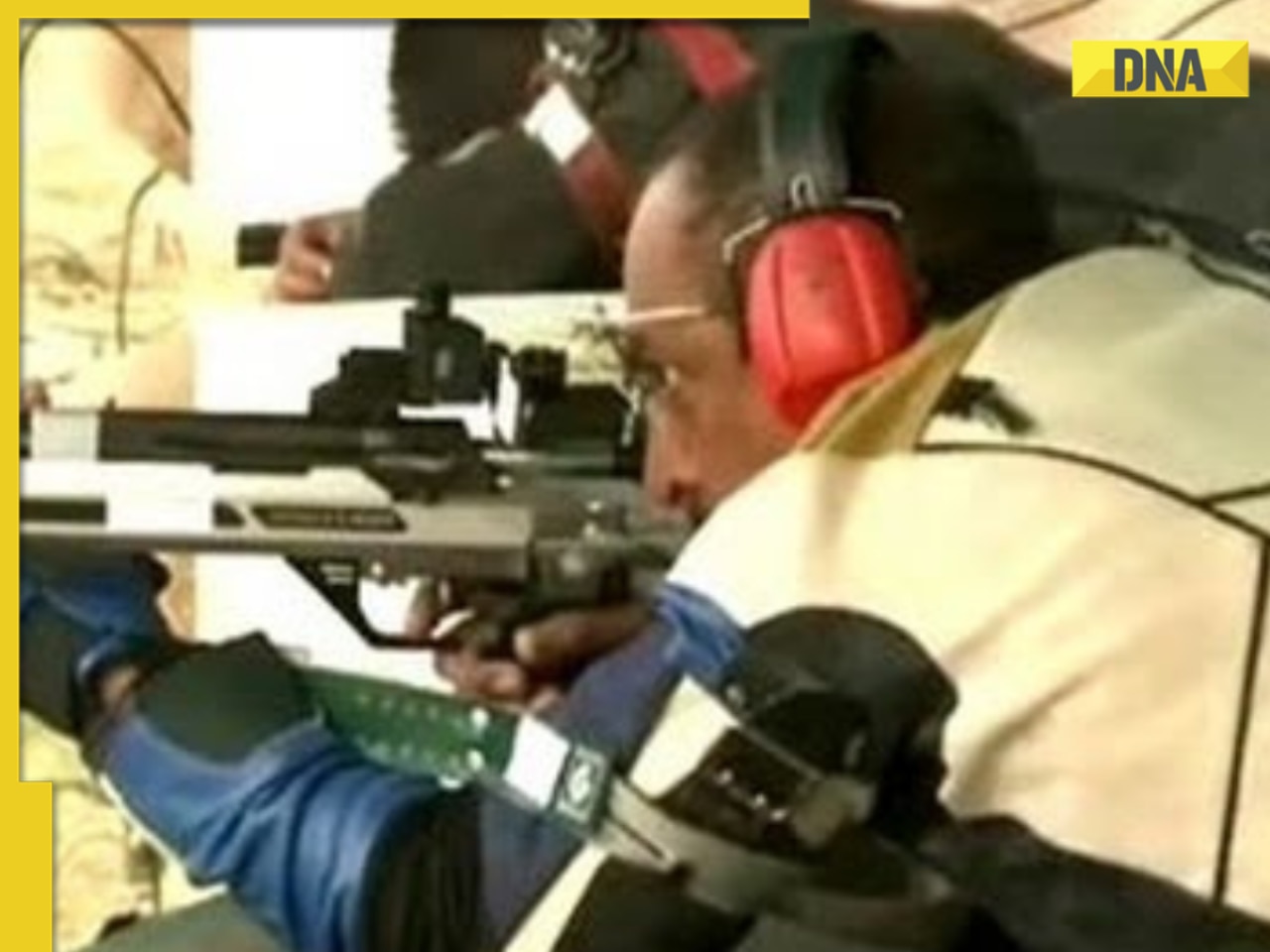Gilchrist’s squash-ball-in-glove in the WC final has created a furore. While the jury may be still out on the issue, DNA lists some other such incidents.
As if this cricket World Cup hadn’t had enough controversies already, Adam Gilchrist’s squash-ball-in-glove in the final against Sri Lanka has created another furore. Was it legal, did he gain an unfair advantage over the others while doing so, or was it sheer innovative brilliance? While the jury may be still out on the issue, Varun Zaiwalla remembers some other such incidents
Ruiz’s massive marathon shortcut
As far as controversial sporting equipment goes, a New York subway train is one of the more unsubtle. Yet this is what Rosie Ruiz, Cuban born ‘runner’, used to gain a qualifying time in the 1980 New York marathon to gain entry to that year’s Boston marathon. Once in Boston, she again cheated, waiting near the finish line to steal another well placed finish. Unfortunately for her, she decided to join in a little too early, and crossed the finish line in a new record time for the women’s race. Suspicions were raised during subsequent interviews when the bewildered Ruiz, without a drop of sweat on her, proved entirely ignorant of basic marathon running jargon, could not name any landmarks she had passed in the race and could not prove she had ever run a marathon before. She was swiftly stripped of the title.
Niekro’s suspicious sandpaper
August 3rd 1987 saw a watershed incident for players being caught with suspicious equipment in the world of baseball. Joe Niekro was a pitcher for the Minnesota Twins outfit, and was fast gaining a reputation as a pitcher of unplayable quality. On this day, however, he was just a little too unplayable, and the umpire felt the need to examine his pockets. Try as he might to hide it in the dirt behind him, Niekro’s nail-file, with which he had been gouging at the balls, was found, along with a length of sandpaper contoured to fit around his finger. He did try to explain that he needed to look after his nails for his special ‘knuckle ball’, but somehow this did not excuse him from suspension.
Sharma banned for bluetooth
At least two Indian chess players - Uma Kant Sharma and his Jharkhand statemate DP Singh — were accused of getting external help while playing on the board. Sharma, in fact, was caught taking help through a bluetooth headset which he had covered with a monkey cap. The all-India Chess Federation banned him about six months ago. But efforts to catch Singh, an International Master, have not yielded results even though the AICF conducted a thorough inquiry. Singh continues to be under watch-list of the AICF. However, cheating allegations in chess are not new. A former world champion too has faced accusations of such malpractices. But the charges have not been proved.
Lillee’s aluminium bludgeon
Dennis Lillee was well known as a ferocious fast bowler, but his batting fame mainly sprung from an incident in 1979 at the WACA ground when Australia played England. Emerging not out for the second day, Lillee was soon spotted not to be carrying a traditional willow bat, but instead an aluminium one. Like Gilchrist’s squash ball, there was nothing in the rules preventing this, and so he batted until his captain, Ian Chappell, demanded that he change to a wooden bat as the aluminium version was not hitting the ball far enough. Lillee at first refused but after a long delay relented. The rules were soon changed preventing this from happening again, but until then Lillee’s motivation became clear as he claimed a cut of the profits from the massive sales of this new form of bat.
Thorpe’s Sealsuit Scandal
In the run up to the 2000 Olympic Games, Australian Swimmer Ian Thorpe found himself at the centre of a storm over his apparel. He had made it known that he intended to compete wearing a full-length ‘seal-suit’, which hugged his body leaving only hands, feet and face uncovered. A controversy emerged over both the legality of the suit’s streamlining qualities, and also over whether it aided with buoyancy. The International Amateur Swimming Federation (FINA) were called away from their unending task of chasing drug cheats, and eventually passed the suits as legal. At the Olympics themselves, Thorpe’s kit claimed all the early attention, but his Gold Medals were the ultimate talking point.
Tampering with the ball
Michael Atherton found himself in trouble for ball tampering during a home Test against South Africa in 1994. TV cameras had caught Atherton putting his hand into his pocket and then rubbing something from the pocket onto the ball. Atherton, when questioned, said it was dirt he used to dry his hands. The incident caused a huge media uproar in England and abroad, and the image of Atherton rubbing the ball was replayed thousands of times. Eventually, the match referee investigated the event and fined Atherton GBP 2,000, not for ball tampering but for failing to disclose to the referee the fact that he had dirt in his pocket.
Bob and Hansie’s earpiece
The late Bob Woolmer found himself the subject of criticism during the 1999 World Cup when he was seen conversing with his captain Hansie Cronje through an earpiece while Cronje was fielding. The incident happened while South Africa were playing their first match against India at Hove. While there is no evidence that the communication would have served much purpose, Sourav Ganguly saw fit to complain to the umpires about the use of this technology, and after the rules were consulted, Woolmer and Cronje were forced to break off their wireless relations. Baseless rumours at the time suggested that Cronje was actually giving live information to bookmakers through the earpiece.
Did the graphite bat do the trick?
Ricky Ponting was joined by teammate Justin Langer, Sri Lanka’s Sanath Jayasuriya and New Zealander Nathan Astle in 2006 in reawakening the controversy started by Dennis Lillee. This time, the players were using a bat made of graphite from manufacturers Kookaburra. The graphite blade was the one that had taken Ponting to the position of number one batsman in the world, and it was suggested that he owed much of this to an illegal bat. The ICC upheld the ruling about wooden bats made after the Lillee incident, but Ponting just continued to make the runs in a more traditionally equipped manner.
![submenu-img]() Meet IIT-JEE topper with AIR 1, son of government school teachers, he went on to pursue...
Meet IIT-JEE topper with AIR 1, son of government school teachers, he went on to pursue...![submenu-img]() Salman Khan house firing case: One more Lawrence Bishnoi gang member arrested by Mumbai Police
Salman Khan house firing case: One more Lawrence Bishnoi gang member arrested by Mumbai Police ![submenu-img]() Mukesh Ambani to host Anant-Radhika's second pre-wedding function: Trip to start from Italy with 800 guests and end in..
Mukesh Ambani to host Anant-Radhika's second pre-wedding function: Trip to start from Italy with 800 guests and end in..![submenu-img]() Driver caught on camera running over female toll plaza staff on Delhi-Meerut expressway, watch video
Driver caught on camera running over female toll plaza staff on Delhi-Meerut expressway, watch video![submenu-img]() 'If you come and do something here...': EAM S Jaishankar on India's 'message' against terrorism
'If you come and do something here...': EAM S Jaishankar on India's 'message' against terrorism![submenu-img]() Meet IIT-JEE topper with AIR 1, son of government school teachers, he went on to pursue...
Meet IIT-JEE topper with AIR 1, son of government school teachers, he went on to pursue...![submenu-img]() TN 11th Result 2024: TNDGE Tamil Nadu HSE (+1) result declared, direct link here
TN 11th Result 2024: TNDGE Tamil Nadu HSE (+1) result declared, direct link here![submenu-img]() Meet doctor who cracked UPSC exam with AIR 9 but didn’t became IAS due to…
Meet doctor who cracked UPSC exam with AIR 9 but didn’t became IAS due to…![submenu-img]() TN 11th Result 2024 to be declared today; know how to check
TN 11th Result 2024 to be declared today; know how to check![submenu-img]() Meet man who worked as coolie, studied from railway's WiFi, then cracked UPSC exam to become IAS, secured AIR...
Meet man who worked as coolie, studied from railway's WiFi, then cracked UPSC exam to become IAS, secured AIR...![submenu-img]() DNA Verified: Is CAA an anti-Muslim law? Centre terms news report as 'misleading'
DNA Verified: Is CAA an anti-Muslim law? Centre terms news report as 'misleading'![submenu-img]() DNA Verified: Lok Sabha Elections 2024 to be held on April 19? Know truth behind viral message
DNA Verified: Lok Sabha Elections 2024 to be held on April 19? Know truth behind viral message![submenu-img]() DNA Verified: Modi govt giving students free laptops under 'One Student One Laptop' scheme? Know truth here
DNA Verified: Modi govt giving students free laptops under 'One Student One Laptop' scheme? Know truth here![submenu-img]() DNA Verified: Shah Rukh Khan denies reports of his role in release of India's naval officers from Qatar
DNA Verified: Shah Rukh Khan denies reports of his role in release of India's naval officers from Qatar![submenu-img]() DNA Verified: Is govt providing Rs 1.6 lakh benefit to girls under PM Ladli Laxmi Yojana? Know truth
DNA Verified: Is govt providing Rs 1.6 lakh benefit to girls under PM Ladli Laxmi Yojana? Know truth![submenu-img]() Remember Harsh Lunia? Just Mohabbat child star, here's how former actor looks now, his wife is Bollywood's popular...
Remember Harsh Lunia? Just Mohabbat child star, here's how former actor looks now, his wife is Bollywood's popular...![submenu-img]() Mother's Day 2024: Bollywood supermoms who balance motherhood, acting, and run multi-crore businesses
Mother's Day 2024: Bollywood supermoms who balance motherhood, acting, and run multi-crore businesses![submenu-img]() Rocky Aur Rani's Golu aka Anjali Anand shocks fans with drastic weight loss without gym, says fitness secret is...
Rocky Aur Rani's Golu aka Anjali Anand shocks fans with drastic weight loss without gym, says fitness secret is...![submenu-img]() In pics: Ram Charan gets mobbed by fans during his visit to Pithapuram for ‘indirect campaign’ for uncle Pawan Kalyan
In pics: Ram Charan gets mobbed by fans during his visit to Pithapuram for ‘indirect campaign’ for uncle Pawan Kalyan![submenu-img]() Streaming This Week: Yodha, Aavesham, Murder In Mahim, Undekhi season 3, latest OTT releases to binge-watch
Streaming This Week: Yodha, Aavesham, Murder In Mahim, Undekhi season 3, latest OTT releases to binge-watch![submenu-img]() Haryana Political Crisis: Will 3 independent MLAs support withdrawal impact the present Nayab Saini led-BJP government?
Haryana Political Crisis: Will 3 independent MLAs support withdrawal impact the present Nayab Saini led-BJP government?![submenu-img]() DNA Explainer: Why Harvey Weinstein's rape conviction was overturned, will beleaguered Hollywood mogul get out of jail?
DNA Explainer: Why Harvey Weinstein's rape conviction was overturned, will beleaguered Hollywood mogul get out of jail?![submenu-img]() What is inheritance tax?
What is inheritance tax?![submenu-img]() DNA Explainer: What is cloud seeding which is blamed for wreaking havoc in Dubai?
DNA Explainer: What is cloud seeding which is blamed for wreaking havoc in Dubai?![submenu-img]() DNA Explainer: What is Israel's Arrow-3 defence system used to intercept Iran's missile attack?
DNA Explainer: What is Israel's Arrow-3 defence system used to intercept Iran's missile attack?![submenu-img]() Salman Khan house firing case: One more Lawrence Bishnoi gang member arrested by Mumbai Police
Salman Khan house firing case: One more Lawrence Bishnoi gang member arrested by Mumbai Police ![submenu-img]() Meet actress, who got rejected for her looks, had no hit for 15 years; later beat Alia, Deepika, Katrina at box office
Meet actress, who got rejected for her looks, had no hit for 15 years; later beat Alia, Deepika, Katrina at box office![submenu-img]() Abdu Rozik breaks silence on his wedding announcement being called ‘publicity stunt’: ‘The whole world is…’
Abdu Rozik breaks silence on his wedding announcement being called ‘publicity stunt’: ‘The whole world is…’![submenu-img]() Meet actress who made debut with Salman Khan, had super flop career, then got TB, now lives in chawl, runs..
Meet actress who made debut with Salman Khan, had super flop career, then got TB, now lives in chawl, runs..![submenu-img]() Meet actress who worked with Naseeruddin Shah, sister of popular models, is now getting trolled on social media for..
Meet actress who worked with Naseeruddin Shah, sister of popular models, is now getting trolled on social media for..![submenu-img]() Driver caught on camera running over female toll plaza staff on Delhi-Meerut expressway, watch video
Driver caught on camera running over female toll plaza staff on Delhi-Meerut expressway, watch video![submenu-img]() Delhi man takes 200 flights in 110 days, steals lakhs worth of jewelry from passengers
Delhi man takes 200 flights in 110 days, steals lakhs worth of jewelry from passengers![submenu-img]() Viral video: Man makes paratha with 'diesel', internet reacts
Viral video: Man makes paratha with 'diesel', internet reacts![submenu-img]() Viral video of 'black jalebi' leaves internet in shock; netizens say 'hey bhagwan...'
Viral video of 'black jalebi' leaves internet in shock; netizens say 'hey bhagwan...'![submenu-img]() Real-life Bambi and Thumper? Adorable deer and rabbit video melts hearts online
Real-life Bambi and Thumper? Adorable deer and rabbit video melts hearts online

























































)
)
)
)
)
)